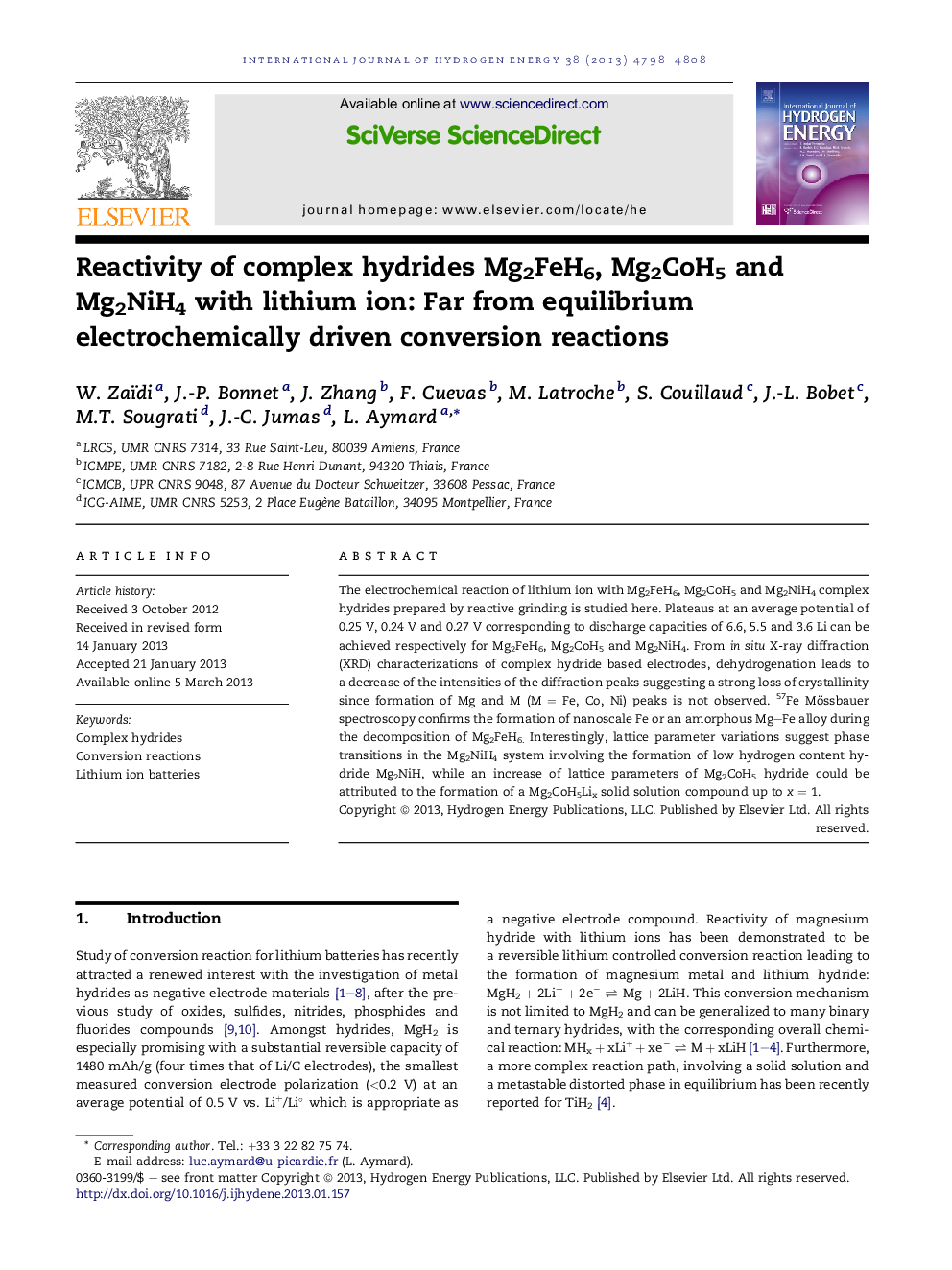| Article ID | Journal | Published Year | Pages | File Type |
|---|---|---|---|---|
| 1278175 | International Journal of Hydrogen Energy | 2013 | 11 Pages |
The electrochemical reaction of lithium ion with Mg2FeH6, Mg2CoH5 and Mg2NiH4 complex hydrides prepared by reactive grinding is studied here. Plateaus at an average potential of 0.25 V, 0.24 V and 0.27 V corresponding to discharge capacities of 6.6, 5.5 and 3.6 Li can be achieved respectively for Mg2FeH6, Mg2CoH5 and Mg2NiH4. From in situ X-ray diffraction (XRD) characterizations of complex hydride based electrodes, dehydrogenation leads to a decrease of the intensities of the diffraction peaks suggesting a strong loss of crystallinity since formation of Mg and M (M = Fe, Co, Ni) peaks is not observed. 57Fe Mössbauer spectroscopy confirms the formation of nanoscale Fe or an amorphous Mg–Fe alloy during the decomposition of Mg2FeH6. Interestingly, lattice parameter variations suggest phase transitions in the Mg2NiH4 system involving the formation of low hydrogen content hydride Mg2NiH, while an increase of lattice parameters of Mg2CoH5 hydride could be attributed to the formation of a Mg2CoH5Lix solid solution compound up to x = 1.
► Electrochemical reactivity of Mg2FeH6, Mg2CoH5 and Mg2NiH4 hydrides with lithium ion. ► Plateaus at 0.25, 0.24, 0.27 V corresponding to discharge capacities of 6.6, 5.5, 3.6 lithium. ► Mg2FeH6: Formation of nano Fe or amorphous Mg–Fe alloy during the decomposition. ► Mg2CoH5: Formation of a Mg2CoH5Lix solid solution suggested. ► Mg2NiH4: Formation of Mg2NiH hydride proposed.
